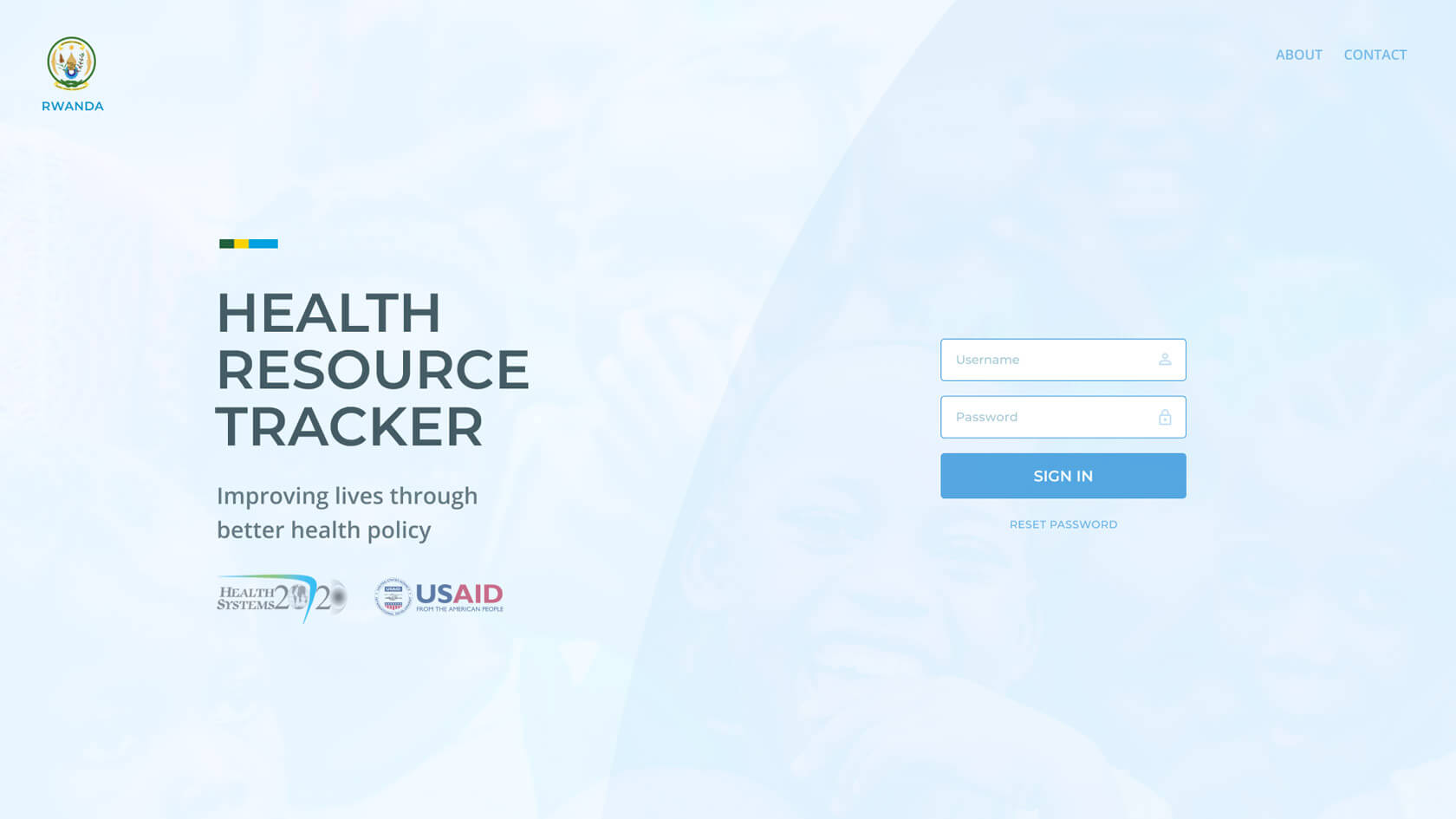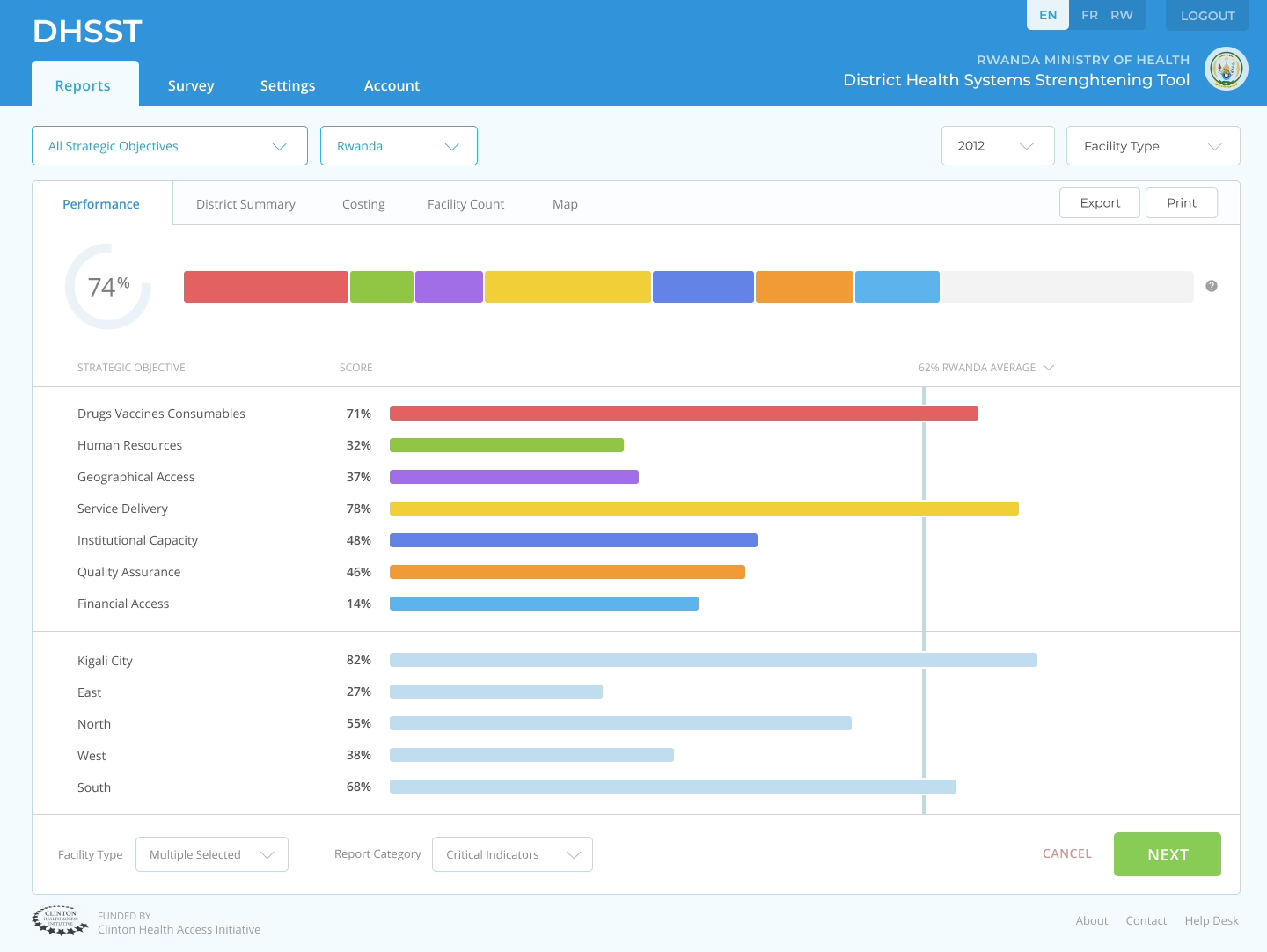 Case Study
How I Designed Apps That Track Health Resource Spending in Rwanda
Case Study
How I Designed Apps That Track Health Resource Spending in Rwanda
-
Position
Lead UX/UI Designer & Engineer
-
Expertise
Design, Interaction, Front-end Dev, Management, Planning
-
Platform
Web, Responsive, Print
Position
Lead UX/UI Designer & Engineer
Expertise
Design, Interaction, Front-end Dev, Management, Planning
Platform
Web, Responsive, Print


An Essential Ingredient for Improved Health Governance
Rwanda recognizes the importance of health resource tracking as a tool to guide resource allocation and improve resource management. The development of the Health Resource Tracker (HRT) was the next step in this process to institutionalize resource tracking and reflect the priority to ensure resource flows were in line with strategic programs and objectives.
HRT app tracks resource flows in the health sector from many different sources to the ultimate health function they serve. It gives information about health spending, both planned and realized, seen as essential for evidence-based budgeting, planning and policy-making.
Clinton Health Access Initiative along with ABT Associates & USAID led the improvement of health systems and technology in Rwanda on this project. Those new tools we were developing were important in managing AIDS, Malaria and logistical efforts in the country. Their team in Kigali was working on the software back-end, but lacked design and front-end expertise to create more user-friendly experience for the app users.
A Great Initiative to Help the Third World
As a lead UI/UX designer at Siyelo I stepped in and helped design and implement 3 different clouds to collect, track and understand medical resources and equipment allocation across the entire country of Rwanda.
Over the period of 2+ years while I was working closely with HRT's development team, the prime focus was put on understanding the data and use flows involved, with the ultimate goal of improving the applications' UX. In other words, simplification of the data collection processes, seeking the best ways to report and increase apps use for policy decisions, as well as improving distribution of assets and funds in those countries.


Developing the Tool and Its Fine-Tuning Based on Stakeholder's Feedback
Through constant collaboration and feedback we were able to create designs that presented the apps' data to the healthcare decision-makers in lots of meaningful and easy ways. We supported several iterations of user-testing, heavily prototyping with Balsamiq to optimize workflows, reports and overall UX. Not only were we responsible for the designs,but we also helped implementing them. With their development team having chosen a Java-based framework that we were relatively unfamiliar with, we were nonetheless able to rapidly integrate using our expertise with JS/HAML/SASS/CSS3.
What’s more, we worked entirely remotely on this project, collaborating closely with the in-house development team at The Ministry of Health of Rwanda, doing regular testing and educating their team on the best practices. Ultimately, the final aim was to make sure they could continue maintaining and upgrading the system properly by themselves in the future.
How is HRT Used to Improve Health?
The produced data highlighted some instances where financial flows coming from donors were not fully aligned with Rwanda's own strategic health priorities. That information was used to improve joint planning between Ministries and partners to re-align several financial flows wherever possible. Some specific discoveries we helped MOH make:
- Government investment in health is increasing
- HIV/AIDS spending is high relative to other diseases
- Family planning and reproductive health spending does not reflect the strategic importance of these health interventions
- More funding is needed for non-communicable diseases
The apps also provided very important input to the upcoming development of the Health Sector Strategic Plan by giving all stakeholders a comprehensive understanding of financial flows within the health sector.
Find out more about the entire initiative and outcomes from the Health Resource Tracker: